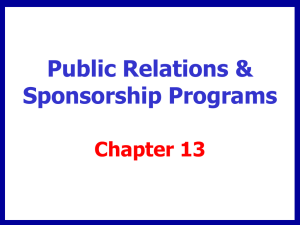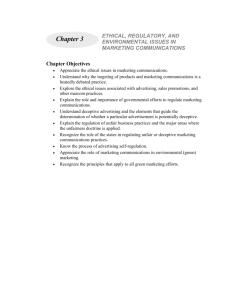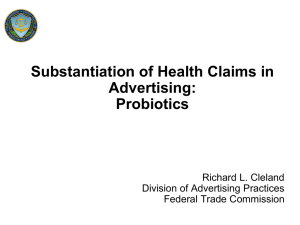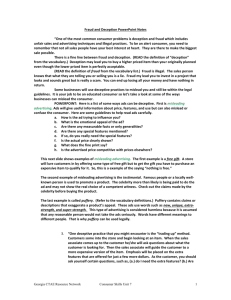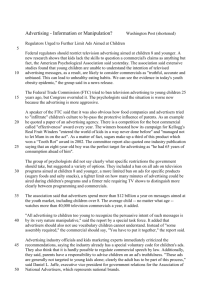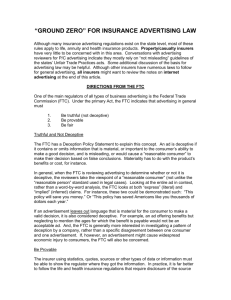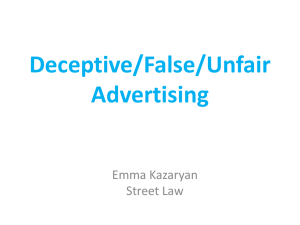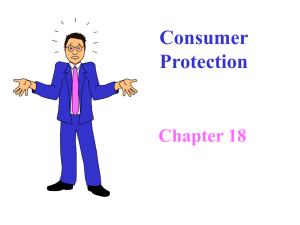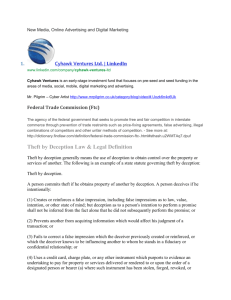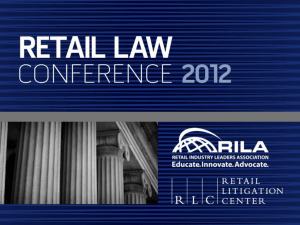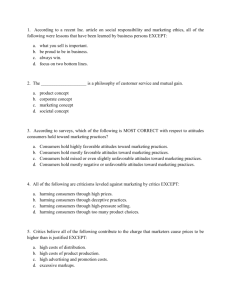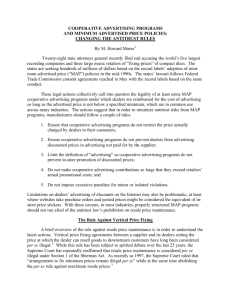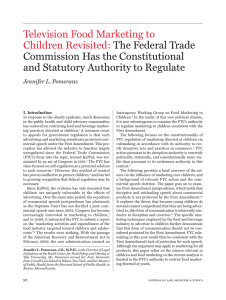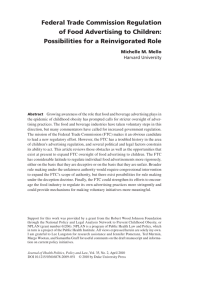1-Dec
advertisement
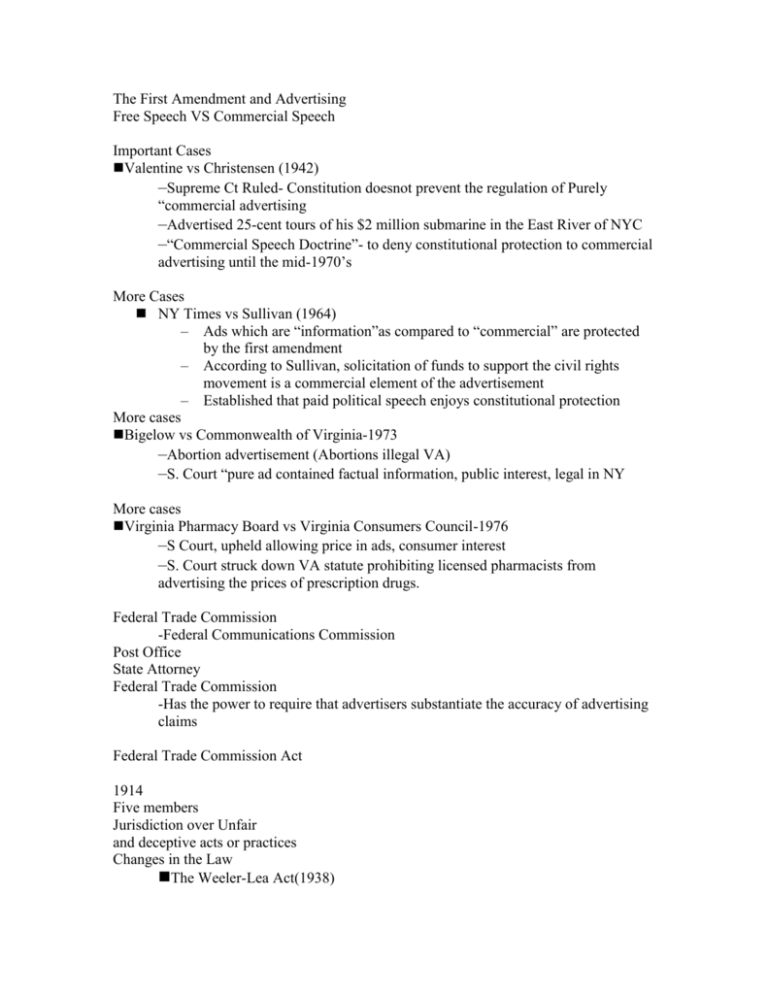
The First Amendment and Advertising Free Speech VS Commercial Speech Important Cases Valentine vs Christensen (1942) –Supreme Ct Ruled- Constitution doesnot prevent the regulation of Purely “commercial advertising –Advertised 25-cent tours of his $2 million submarine in the East River of NYC –“Commercial Speech Doctrine”- to deny constitutional protection to commercial advertising until the mid-1970’s More Cases NY Times vs Sullivan (1964) – Ads which are “information”as compared to “commercial” are protected by the first amendment – According to Sullivan, solicitation of funds to support the civil rights movement is a commercial element of the advertisement – Established that paid political speech enjoys constitutional protection More cases Bigelow vs Commonwealth of Virginia-1973 –Abortion advertisement (Abortions illegal VA) –S. Court “pure ad contained factual information, public interest, legal in NY More cases Virginia Pharmacy Board vs Virginia Consumers Council-1976 –S Court, upheld allowing price in ads, consumer interest –S. Court struck down VA statute prohibiting licensed pharmacists from advertising the prices of prescription drugs. Federal Trade Commission -Federal Communications Commission Post Office State Attorney Federal Trade Commission -Has the power to require that advertisers substantiate the accuracy of advertising claims Federal Trade Commission Act 1914 Five members Jurisdiction over Unfair and deceptive acts or practices Changes in the Law The Weeler-Lea Act(1938) –Broadened Powers –Deceptive Advertising –False Advertising Other Agencies The FTC and Unfair Advertising Practices Commercial trading practice unfair when.... it causes substantial harm that a consumer or competitor may not reasonably avoid Leading to monetary harm or unwarranted safety and health risks actual advertisements that might encourage undesirable or harmful behavior The FTC Defines DECEPTION A deceptive ad is defined as a material representation or omission that is likely to mislead consumers acting reasonably Three elements determine DECEPTION: –1- the probability of deception –2 - characteristics of consumers –3 - materiality 1 - Probability of Deception Deceptive ads are those that either contain falsehoods or create false impressions that tend to mislead; therefore, ads must possess a “tendency,” a “capacity,” or be “likely” to mislead a reasonable consumer Does not matter whether advertiser actually intended to deceive or not Deception is determined by the overall impression of an ad, not by isolated statements within it 2 - Deception and the Audience The consumer must be acting reasonably in the circumstances An ad is deceptive if it misleads a substantial number of consumers in the subgroup to which it is directed FTC expresses specific concern for the sick, the aged, and children Advertisers are not liable, however, for ads directed at lawyers, doctors, etc. that are misunderstood by typical consumers 3 - Materiality A material statement is one that is likely to affect the consumers’ purchase decision or choices Includes express claims and deliberately implied claims about a product or service, and also omissions FTC has found advertising claims about or omissions about health, safety, efficacy, durability, performance, warranties, quality and cost to be material Express Falsehoods Expressly false statements about product attributes are almost always deceptive The message is stated unequivocally, a demonstration is false, a mock-up or prop is falsely misleading Examples: –include claims that a product is “antique” when it is not old enough –that it is “fireproof” when it is merely fire resistant Implied Falsehoods More common and difficult to identify; create a false impression by implication False meaning added to a truthful advertisement by the reader or viewer because of an impression created by an advertisement At least 15 categories of implications that may be deceptive A few examples are: Reasonable Basis Implication FTC assumes advertisers have a reasonable basis for the objective claims in their ads, if they can substantiate material claims with results from scientific tests or other appropriate evidence Example: FTC ruled in 1972 that Pfizer pharmaceutical co. did not have adequate substantiation for its claims that Unburn suntan lotion “actually anesthetizes nerves” to relieve pain Puffery Implication Advertisers may exaggerate or “puff” their products on such subjective matters as taste, feel, appearance, and smell FTC assumes that ordinary consumers do not take puffery seriously and that it does not create a false implication Puffery does become deception when claims falsely imply assertions of superiority Expertise and Endorsement Implications FTC defines an expert as someone who has acquired superior knowledge of a subject as a result of experience, study, or training Endorsements by experts/celebrities are regulated- --thought to carry special weight with consumer Expertise and Endorsement Implications Product endorsements should be based on objective evaluations, endorser should actually use product or ad should be discontinued Not necessary for celebrities to disclose payment in return for endorsement, but Ave. consumer-yes FTC Powers and Remedies (cont’d.) Competitor Remedies Required Statements –Affirmative Disclosure –Corrective Advertising Halting Advertisement –Consent Decrees –Cease-and-Desist Orders –Injunctions
